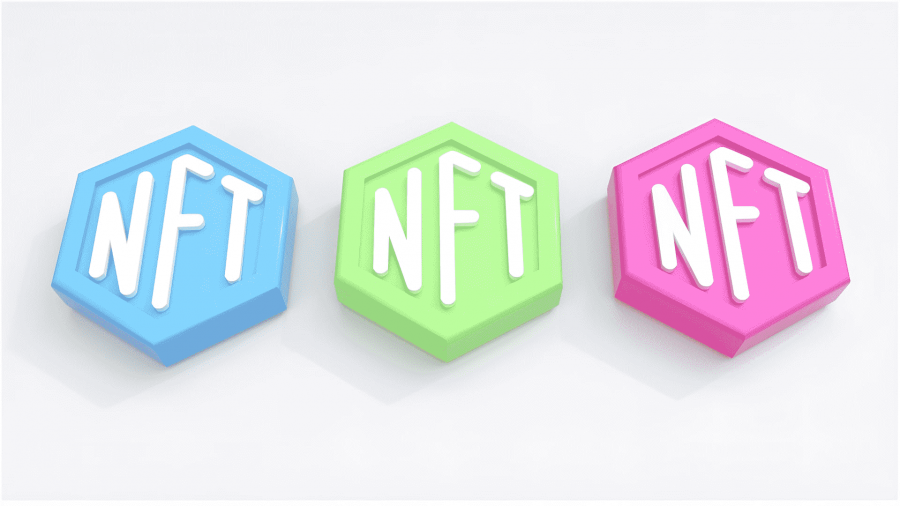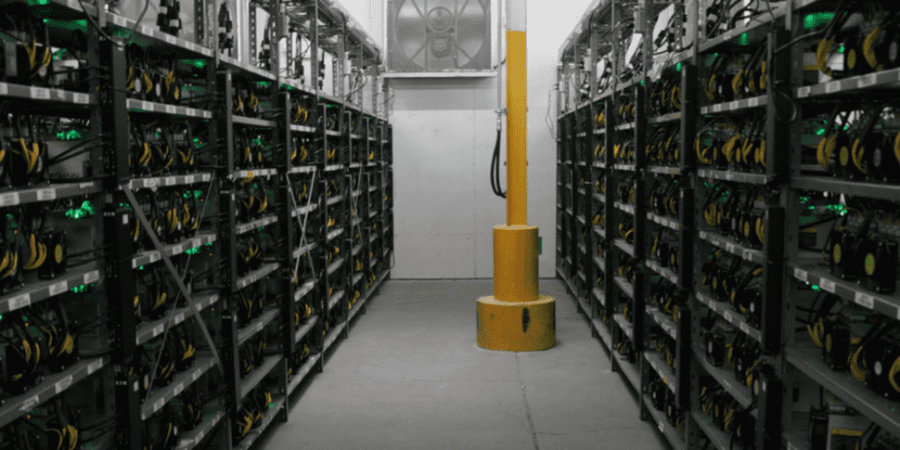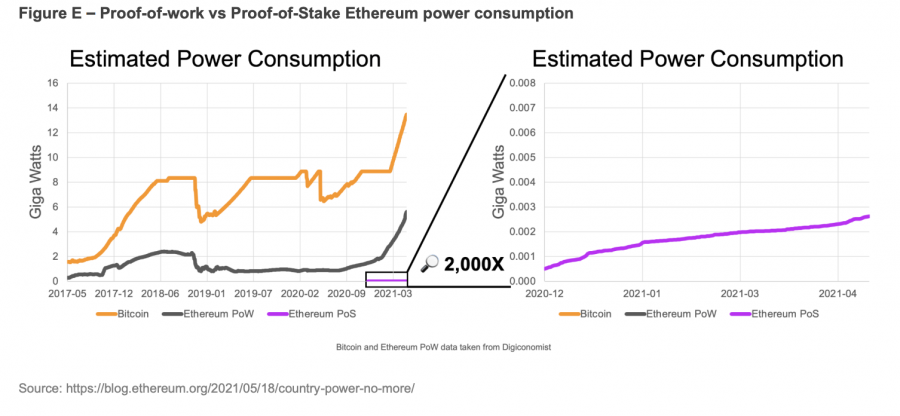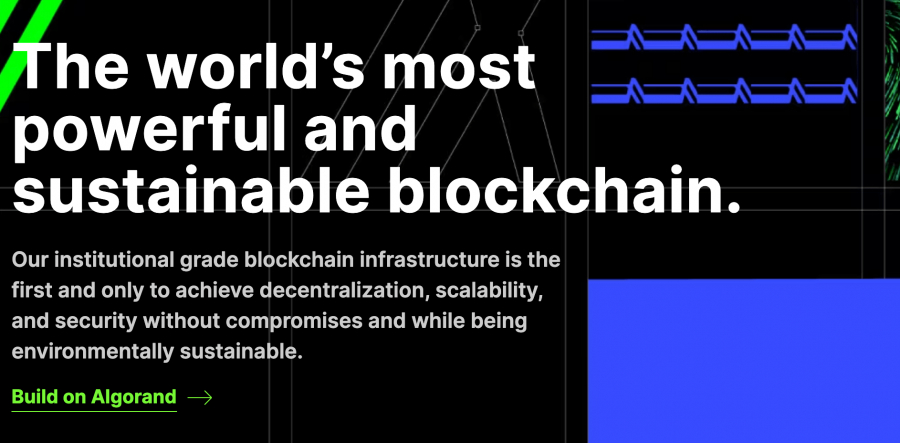Are NFTs bad for the environment? This is a question that has been posed regularly since the explosion in popularity of these digital assets in late 2021. Even though the NFT market has cooled since then, market participants are still eager to know how they affect the environment – and what can be done to mitigate these effects.
This guide discusses NFTs and the environment in detail, covering what these digital assets are and how they may contribute to climate change. We’ll also explore how investors and developers can counteract any adverse effects before presenting some of the best NFTs for the environment in 2024.
IMPT represents one of the best NFTs to buy for eco-conscious investors, as the project focuses primarily on carbon credit trading. Within IMPT’s ecosystem, each carbon credit is structured as an NFT. This makes buying, selling, and trading these carbon credits quick and easy. Users can also earn IMPT tokens by shopping with the platform’s partner brands. These tokens can then be exchanged for carbon credits on IMPT’s marketplace – providing a streamlined way for individuals to make a tangible impact on the environment. IMPT is currently in its presale phase, allowing investors to buy IMPT tokens for just $0.018. Only 600 million tokens are up for grabs at this price point – once they’re gone, the price will increase to $0.023. Those looking to learn more about IMPT and its presale can do so by joining the official Telegram channel, as well as reading the IMPT whitepaper.
Are NFTs bad for the environment? As noted earlier, this question is posed regularly by investors and analysts due to the increasing importance of halting climate change. To answer this question appropriately, it’s vital to provide some context. First, let’s take a closer look at what NFTs actually are before exploring how they affect the environment. First things first – what are NFTs? Many investors who opt to buy an NFT may not actually understand what these digital assets are. However, understanding the concept of NFTs in detail is crucial to grasping how they may negatively impact the environment. As defined by Forbes, non-fungible tokens (NFTs) are digital assets hosted on the blockchain that represent a real-world object. These objects can be anything, although most NFTs represent artwork. Other NFT types include collectibles, GIFs, videos, metaverse avatars, and even music. NFTs’ effect on the environment stems from the fact that they are stored on the blockchain. Each NFT is one-of-a-kind, so tokenizing these assets on blockchain networks is a necessary process that enables them to be easily traded. This process also ensures that NFT ownership is never disputed – the NFT holder can easily prove that the digital asset in question is theirs. Most cool NFT projects are hosted on the Ethereum blockchain due to its ‘first-mover’ status concerning smart contracts. However, many other chains, such as Algorand and Solana, have begun eating into Ethereum’s share of the NFT market. The main reason for this is Ethereum’s high GAS fees, which have made the process of NFT trading relatively costly. Now that we’ve covered what NFTs are, let’s focus on why NFTs are bad for the environment. As touched on above, NFTs are created and hosted on blockchain networks – and it’s this aspect which is where their environmental impact comes into play. The creation of NFTs is the primary way in which they affect the environment. It’s important to understand that NFTs themselves are not the cause of the adverse environmental impact – the underlying blockchain is. This stems from the process of creating NFTs, which is usually referred to as ‘minting’. Those looking to make money with NFTs must first ‘mint’ their digital asset onto the blockchain. This process is essentially the act of taking an asset, such as a piece of digital artwork, and tokenizing it so it can be easily traded. Minting is usually handled by partnering with an NFT marketplace; however, it can also be completed individually by those with programming experience. This minting process will be the main focus of this article since this is the source of NFTs’ impact on the environment. Let’s now take a closer look at this process and the specific ways it can contribute to climate change. So how do NFTs harm the environment? As mentioned above, the source of their negative environmental impact tends to be the act of ‘minting’. Although the underlying blockchain itself technically causes this impact, most of the blame is still attributed to NFTs. The main reason that NFT minting is considered harmful to the environment is that it is highly energy-intensive. Minting cannot be avoided, as this process creates verifiable information regarding where the digital asset is located on the blockchain. Whoever ‘stores’ this information is considered the NFT’s owner, which is why the information is usually held in a crypto wallet. When an NFT is minted, a transaction occurs on the blockchain related to the new asset being entered into circulation. Like all blockchain transactions, the network must verify this to ensure accuracy. This verification procedure is where the interaction between NFTs and the environment comes into play. To simplify our explanation of verification, we’ll use the Ethereum blockchain as an example. Until recently, Ethereum used what’s known as a ‘Proof-of-Work’ (PoW) consensus protocol. This means verifying transactions was facilitated through a process called ‘mining’. This process has been shown to contribute hugely to carbon dioxide (CO2) emissions. The reason is that mining requires advanced computing hardware to complete – and the need for even more advanced hardware increases as the size of the blockchain network expands. Aside from ‘pre-Merge’ Ethereum, the most widely-used PoW blockchain is Bitcoin. According to an article from the New York Times, the Bitcoin network consumes around 91 terawatt-hours of electricity each year. This is more than is used by the entire nation of Finland. When people ask, “How do NFTs hurt the environment?” it’s usually attributed to Proof-of-Work (PoW) blockchains like Ethereum and Bitcoin. As evidenced above, the electricity requirements of these networks are huge. In turn, this contributes massively to carbon dioxide production. The advanced computing hardware used in the mining process, which is crucial to verifying the creation of NFTs, consumes vast amounts of electricity. This is because mining is actually just a lengthy process of generating a hexadecimal number that is less than the block header. Without making this explanation too complex, the vital thing to remember about this process of generating the hexadecimal number is that it takes trillions of attempts – which is why it’s done by computers and not humans. The mechanism of checking and re-checking consumes tremendous amounts of electricity, which is why PoW chains have received such a bad reputation. Relating this to NFTs, it’s clear that those minted on PoW chains can result in adverse environmental effects. That’s why the greenest cryptocurrency projects tend to use alternative consensus protocols to PoW – we’ll cover this in the following section. However, even after an NFT has been minted, additional energy-related effects still exist. When an investor opts to buy or flip NFTs, a blockchain transaction is initiated. Much like minting, this transaction must be verified through mining to confirm that ownership has been transferred to another person. Summing everything up, the reason that NFTs are sometimes considered ‘bad’ for the environment is not actually due to the digital assets themselves – it’s down to the energy-intensive process of minting and trading them, which is the underlying blockchain’s responsibility. With that in mind, let’s take a look at how NFTs can be made more eco-friendly. Many market participants and media outlets focus on why NFTs are bad for the environment – yet not enough attention is paid to the positive aspects of these digital assets. Many of the best utility NFT projects have ‘green’ goals, helping shift perceptions surrounding their impact on the environment. One of the main ways that NFT creators can limit their environmental impact is to utilize Proof-of-Stake (PoS) blockchains. Like PoW networks, these blockchains offer a platform for users to mint, buy, sell, and trade NFTs. However, the critical difference between the two types is that PoS networks consume much less electricity. According to Binance Academy, PoS is a consensus mechanism where block validators are chosen based on how much they have ‘staked’. Staking refers to ‘locking up’ tokens on the network – meaning that only those who have agreed to pledge their tokens can participate in validation. When a transaction occurs on a PoS blockchain, such as when an NFT is transferred to a new owner, a validator will be chosen to verify the data. If the validator confirms that everything is accurate, the transaction (block) will be added to the blockchain. As a reward for checking the transaction’s accuracy, the validator will be rewarded with an allocation of the network’s native token. So how does this relate to NFTs? As noted above, the PoS consensus protocol uses far less energy than PoW to accomplish precisely the same tasks. According to Business Insider, PoS blockchains are also much more scalable since there’s no need for advanced computational equipment. Thus, NFT creators and traders who opt to use PoS chains can ensure their contribution to CO2 emissions is limited. Although NFT minting and trading will always consume at least some energy, using an alternative to PoW makes the process ‘greener’ and helps draw activity away from these high-energy networks. Many new NFT projects also positively impact the environment through eco-friendly initiatives. This often dovetails nicely with the initiatives promoted by the underlying blockchain – creating a synergistic effect that can be highly beneficial in the fight against climate change. As mentioned at the start of this article, IMPT is a popular example of an eco-friendly NFT project. Due to IMPT’s obvious link to the carbon credits market, this project aims to slow the rate of global warming by reducing (or removing) CO2 from the atmosphere. Since the carbon credits in IMPT’s ecosystem are structured as NFTs, this helps improve the reputation of these digital assets. Another NFT project looking to make a positive impact is the ‘Cardano Forest’. As the name suggests, this project is facilitated by the Cardano blockchain in conjunction with veritree – an eco-friendly company that helps businesses take restorative actions. The collaboration between Cardano and veritree to create this Cardano Forest will see a total of one million trees being planted. Individuals can donate to the project and receive an NFT that acts as a digital record of the donation. Each NFT will also have the coordinates of a selection of verified trees, allowing holders to see their contribution towards reforestation clearly. The final way that NFTs can be beneficial to the environment is by employing the use of renewable energy in the minting and trading process. Many of the most eco-friendly crypto projects look to reduce their carbon footprint through purchasing offsets – yet the idea of using renewable energy sources remains unconventional. Using renewable energy sources is more applicable to miners who help secure PoW blockchains. As we explained earlier, mining is energy-intensive – yet it doesn’t have to be. If miners were to use ‘green energy’ to power their computing equipment, it would drastically reduce the CO2 emissions associated with the process. However, renewable energy can also be employed by validators on PoS blockchains. Although these blockchains don’t require advanced hardware, validators still need to run their validator node using a laptop or PC. Even though this process is much less energy-intensive, it still requires electricity. Thus, miners and validators can help reduce (or remove) their carbon footprint and help improve the reputation of NFTs by utilizing renewable energy sources to power their activities, such as solar or wind power. Although these sources aren’t as accessible as non-renewable sources, this is beginning to change – ensuring there are more eco-friendly options for network participants. Until now, we’ve discussed what NFTs are, how they may harm the environment, and the ways in which these digital assets could be considered eco-friendly. Now, let’s turn our attention to some specific NFT projects that promote sustainability. Detailed below are five exciting projects that are currently making waves on NFT news outlets due to their environmentally-conscious goals: As briefly mentioned earlier, IMPT is a carbon credits ecosystem hosted on the blockchain – specifically, the Ethereum blockchain. By leveraging the power of this technology, IMPT is able to structure carbon credits as NFTs, making the trading process quick and easy. As noted in IMPT’s whitepaper, the project also makes it easy for individuals to obtain carbon credits through their regular shopping activities. IMPT has partnered with thousands of leading brands from various industries – whenever an individual shops with one of these brands, they will receive IMPT tokens as a reward. These tokens can be exchanged into carbon credits on IMPT’s platform, significantly increasing the accessibility of these eco-friendly assets. Moreover, individuals can also ‘retire’ their carbon credit NFTs, which refers to the process of sending them to a null wallet address and removing them from circulation. By retiring a carbon credit NFT, individuals are effectively ‘removing’ CO2 from the atmosphere. As such, these NFTs are viewed by many as some of the most eco-friendly on the market since they incentivize investors to act sustainably. IMPT’s team has also partnered with various impactful initiatives to aid the fight against climate change. Only projects that leading regulatory bodies have thoroughly vetted are onboarded to the IMPT platform, ensuring a high degree of credibility. Although the IMPT platform is still in development, investors can gain exposure to its future growth by purchasing IMPT tokens through the project’s presale. Tokens are priced at $0.018 during the first phase, although the price will rise to $0.023 and then $0.028 in the following two phases. Due to this, large portions of the investment community are scrambling to acquire tokens at the lowest price point before the 600 million token allocation sells out.
Another NFT project that aims to help the environment is Algorand. The first thing to note is that Algorand is actually a blockchain, not an NFT collection, yet it provides an eco-friendly foundation for creators to mint their digital assets. This is because Algorand is one of the best Proof-of-Stake coins, using a fraction of the energy that Bitcoin does. As noted in an Algorand blog post, minting an NFT on the network generates just 0.000000kg of CO2. In comparison, the average electricity source emissions in the US equate to 0.50kg of CO2 (per kWh). This highlights how little energy is consumed by Algorand NFTs. Another reason Algorand is so eco-friendly is that the development team has committed to being carbon negative. This goal is being tackled in conjunction with ClimateTrade, which sees Algorand use a portion of its transaction fees to buy carbon offsets. Due to this, Algorand is undoubtedly one of the most energy-efficient crypto networks for NFT creators and investors.
Crypto assets are a highly volatile investment product. Your capital is at risk. Like Algorand, Polygon is an eco-friendly blockchain network that uses a PoS consensus mechanism to validate transactions. Since Polygon is used as a Layer-2 scaling solution for Ethereum, it has emerged as a ‘greener’ alternative for NFT creators who wish to avoid energy-intensive processes. According to Polygon’s Green Manifesto, the development team aims to achieve carbon-negative status in 2022. Moreover, the team has pledged $20 million to various eco-friendly initiatives to help combat climate change. These characteristics trickle down to those interested in NFTs, as they make Polygon an attractive network for minting and trading. Although the need for Polygon may have diminished since Ethereum transitioned to a PoS consensus protocol, the network’s NFTs are still available on many of the best NFT marketplaces – offering a viable option for environmentally-conscious investors.
Crypto assets are a highly volatile investment product. Your capital is at risk. TrashPiles is an NFT collection hosted on the Solana blockchain that looks to positively impact the world through charitable donations. The collection contains 8,888 pieces of digital art, each depicting a 2D pile of trash. Although this may not sound incredibly appealing to investors, purchasing a TrashPile NFT does enable positive environmental change. This is because TrashPiles’ team will be donating $100,000 to the TeamSeas ocean-cleanup operation, which has a wide range of sustainability benefits. Moreover, the team will also be making recurring donations funded through a 5% transaction fee on secondary marketplace sales. As a cheap NFT project, TrashPiles offers an accessible option for investors who wish to make a tangible impact. These NFTs can be purchased through the Magic Eden marketplace for as little as 0.1 SOL – which equates to less than a dollar at today’s prices. The final entry on our list of eco-friendly NFTs is Coorest. Coorest is a sustainability-focused enterprise that has launched a project called ‘NFTrees’. This project will plant a real-world tree for every NFT minted and reward the creator with $CCO2 tokens. The number of tokens awarded to creators is in line with the amount of CO2 captured by the planted tree(s) – so the higher the environmental impact, the more tokens the creator will receive. These tokens can be used as an investment instrument or burned for ‘Proof of Carbon Compensation’. This Proof of Carbon Compensation is a one-of-a-kind NFT that highlights how much CO2 the creator has removed from the atmosphere. Since these NFTs are immutable, the holder can easily show others their direct contribution to improving the planet, which incentivizes others to use the Coorest platform. Summing everything up, are NFTs bad for the environment? Put simply – no, they aren’t. NFTs themselves cannot be blamed for the excessive electricity consumption that some (namely PoW) blockchains have. These blockchains undoubtedly consume vast amounts of electricity each year – yet this doesn’t mean that the blame must be apportioned to NFTs. Many alternative blockchains, such as Algorand and Solana, use consensus protocols that require much less energy. As such, the environmental impact of NFT minting and trading on these blockchains is negligible. Those looking to use NFTs to make a tangible impact in the fight against climate change may wish to consider IMPT. As mentioned earlier, this carbon credit ecosystem looks to revolutionize how these assets are traded – all whilst making them accessible to the masses. Early investors can buy IMPT tokens through the presale, with tokens priced at just $0.018 at the time of writing. Given the tremendous hype surrounding the project, there’s a high likelihood that the 600 million token allocation will sell out – meaning investors must act quickly to get involved at the lowest price point.
IMPT – The Most Eco-Friendly NFTs


NFTs and the Environment – the Basics
What Are NFTs?
How Are NFTs Created?
How NFTs Can be Bad for the Environment
The Environmental Impact of NFT Minting
Proof-of-Work (PoW) Blockchains
The Electricity Requirement of NFTs
How NFTs Can be Good for the Environment
NFTs on Proof-of-Stake (PoS) Blockchains
Eco-Friendly NFT Projects
Use Renewable Energy Sources
The Best NFTs That Help the Environment
1. IMPT

Chain
Ethereum
Standard
ERC-20
Token Price
$0.0180
End Date
1st December 2022 (Stage 1)
Vesting
Unlock Token Generation Event
Team
Denis Creighton (CEO), Mike English (CTO), Hugh Phelan (CLO)
2. Algorand
3. Polygon

4. TrashPiles

5. ‘NFTrees’ by Coorest
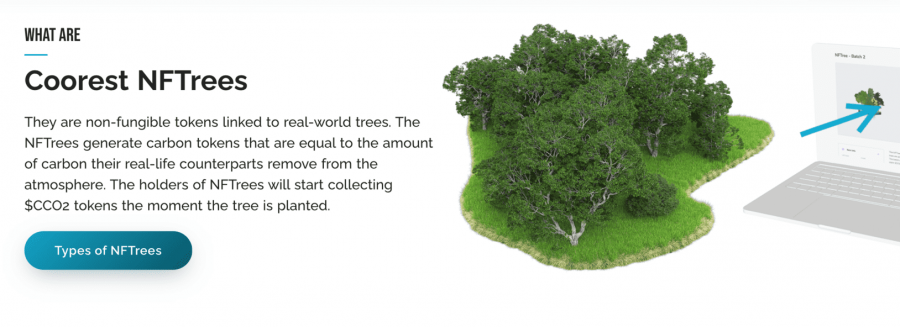
The Verdict – Can NFTs Help the Environment & Fight Climate Change?
FAQs
Are NFTs bad for the environment?
How much energy do NFTs use?

